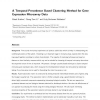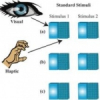352 search results - page 49 / 71 » The Structure of First-Order Causality |
BMCBI
2010
13 years 7 months ago
2010
Background: Time-course microarray experiments can produce useful data which can help in understanding the underlying dynamics of the system. Clustering is an important stage in m...
FUIN
2008
13 years 6 months ago
2008
Causal relations are present in many application domains. Causal Probabilistic Logic (CP-logic) is a probabilistic modeling language that is especially designed to express such rel...
JAIR
2010
13 years 6 months ago
2010
Narrative, and in particular storytelling, is an important part of the human experience. Consequently, computational systems that can reason about narrative can be more effective...
COMPSAC
2010
IEEE
13 years 5 months ago
2010
IEEE
In distributed IT systems, replication of information is commonly used to strengthen the fault tolerance on a technical level or the autonomy of an organization on a business level...
Publication
A key goal for the perceptual system is to optimally combine
information from all the senses that may be available in order to
develop the most accurate and unified picture possi...


